
Peter Lorre was a Slovak and American actor, active first in Europe and later in the United States. He began his stage career in Vienna, in the Austro-Hungarian Empire, before moving to Germany, where he worked first on the stage, then in film, in Berlin during the late 1920s and early 1930s. Lorre caused an international sensation in the Weimar Republic–era film M (1931). Directed by Fritz Lang, Lorre portrayed a serial killer who preys on little girls.

Creighton Tull Chaney, known by his stage name Lon Chaney Jr., was an American actor known for playing Larry Talbot in the film The Wolf Man (1941) and its various crossovers, Count Alucard in Son of Dracula, Frankenstein's monster in The Ghost of Frankenstein (1942), the Mummy in three pictures, and various other roles in many Universal horror films, including six films in their 1940s Inner Sanctum series, making him a horror icon. He also portrayed Lennie Small in Of Mice and Men (1939) and played supporting parts in dozens of mainstream movies, including High Noon (1952), The Defiant Ones (1958), and numerous Westerns, musicals, comedies and dramas.

Alfred Hitchcock Presents is an American television anthology series created, hosted and produced by Alfred Hitchcock, airing on CBS and NBC, alternately, between 1955 and 1965. It features dramas, thrillers, and mysteries. Between 1962 and 1965, it was renamed The Alfred Hitchcock Hour. Hitchcock himself directed only 18 episodes during its run.
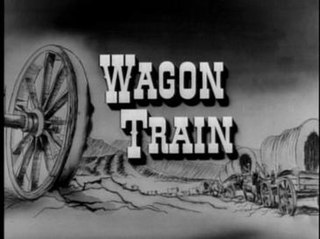
Wagon Train is an American Western television series that aired for eight seasons, first on the NBC television network (1957–1962) and then on ABC (1962–1965). Wagon Train debuted on September 18, 1957 and reached the top of the Nielsen ratings. It is the fictional adventure story of a large westbound wagon train through the American frontier from Missouri to California. Its format attracted famous guest stars for each episode appearing as travelers or residents of the settlements that the regular cast encountered.

King of Kings is a 1961 American epic religious film directed by Nicholas Ray and produced by Samuel Bronston for Metro-Goldwyn-Mayer. Adapted from the New Testament, the film tells the story of Jesus of Nazareth from his birth and ministry to his crucifixion and resurrection. It stars Jeffrey Hunter as Jesus, with Siobhán McKenna, Robert Ryan, Viveca Lindfors, Ron Randell, Hurd Hatfield, and Rip Torn and is narrated by Orson Welles.

Gary Evan Crosby was an American actor and singer. His parents were Bing Crosby, of whom he wrote a highly critical memoir, and the singer and actress Dixie Lee.

The Beast with Five Fingers is a 1946 American mystery horror film directed by Robert Florey from a screenplay by Curt Siodmak, based on the 1919 short story of the same name by W. F. Harvey. The film stars Robert Alda, Victor Francen, Andrea King, and Peter Lorre. The film's score was composed by Max Steiner.

John Mervyn Addison was a British composer best known for his film scores.

Hazel Court was an English actress. She is known for her roles in British and American horror films during the 1950s and early 1960s, including Terence Fisher's The Curse of Frankenstein (1957) and The Man Who Could Cheat Death (1959) for Hammer Film Productions, and three of Roger Corman's adaptations of Edgar Allan Poe stories for American International Pictures: The Premature Burial (1962), The Raven (1963) and The Masque of the Red Death (1964).

Boris Karloff (1887–1969) was an English actor. He became known for his role as Frankenstein's monster in the 1931 Frankenstein, leading to a long career in film, radio, and television.

James Mundell Lowe was an American jazz guitarist who worked often in radio, television, and film, and as a session musician.
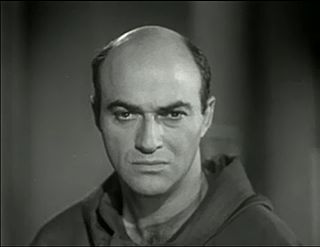
Lawrence Dobkin was an American television director, character actor and screenwriter whose career spanned seven decades.

Checkmate is an American detective television series created by Eric Ambler, starring Anthony George, Sebastian Cabot, and Doug McClure. The show aired on CBS Television from 1960 to 1962 for a total of 70 episodes. It was produced by Jack Benny's production company, "JaMco Productions" in co-operation with Revue Studios. Guest stars included Charles Laughton, Peter Lorre, Lee Marvin, Mickey Rooney and many other prominent performers.
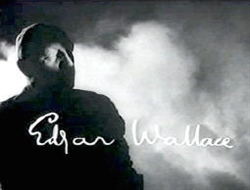
The Edgar Wallace Mysteries is a British second-feature film series mainly produced at Merton Park Studios for Anglo-Amalgamated. There were 48 films in the series, which were released between 1960 and 1965. The series was screened as The Edgar Wallace Mystery Theatre on television in the United States.
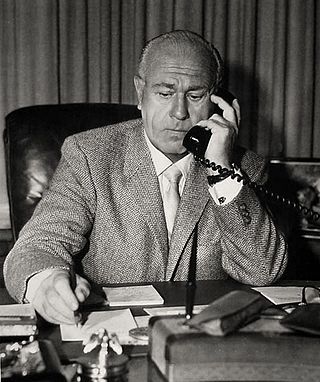
Sol C. Siegel was an American film producer. Two of the numerous films he produced, A Letter to Three Wives (1949) and Three Coins in the Fountain (1954), were nominated for the Academy Award for Best Picture.
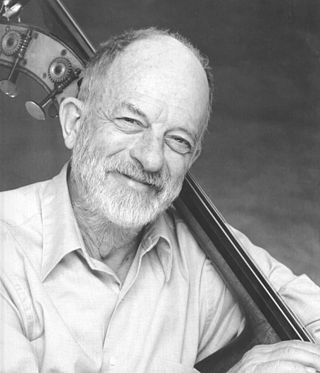
William Orval Crow is an American jazz bassist. Among other work, Crow was the long-term bassist in saxophonist Gerry Mulligan's bands in the 1950s and 1960s.
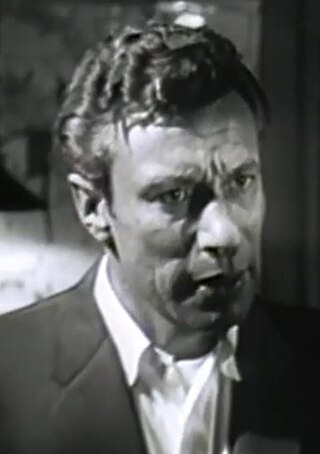
Mort Mills was an American film and television actor who had roles in over 150 movies and television episodes. He was often the town lawman or the local bad guy in many popular westerns of the 1950s and 1960s.

Joyce Jameson was an American actress, known for many television roles, including recurring guest appearances as Skippy, one of the "fun girls" in the 1960s television series The Andy Griffith Show as well as "the Blonde" in the Academy Award-winning The Apartment (1960).

The House in Marsh Road, known on American television as Invisible Creature, is a 1960 British horror suspense film produced by Maurice J. Wilson, directed by Montgomery Tully and starring Tony Wright, Patricia Dainton and Sandra Dorne. The plot centres on a benevolent poltergeist in a country home that protects a woman from her homicidal husband. It may be one of the first films to use the word 'poltergeist' in reference to a spirit or ghost. The film was never released to theatres in the USA and instead went straight to television.
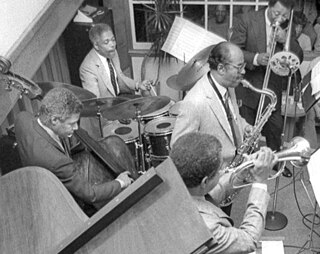
The Jazztet was a jazz sextet, co-founded in 1959 by trumpeter Art Farmer and tenor saxophonist Benny Golson, always featuring the founders along with a trombonist and a piano-bass-drums rhythm section. In its first phase, the Jazztet lasted until 1962, and helped to launch the careers of pianist McCoy Tyner and trombonist Grachan Moncur III. Farmer and Golson revived the group in 1982 and it again toured extensively. Each generation of the group recorded six albums, which were released on a variety of labels.



















